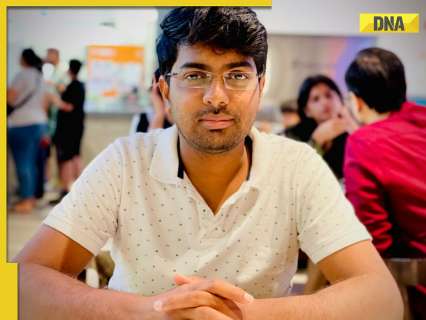
Effective leadership in this era means balancing cutting-edge technology with practical solutions that address real-world needs, driving meaningful advancements and maintaining a competitive edge.
In today’s fast-paced technological landscape, leading innovation-driven teams requires a unique blend of technical expertise and visionary leadership. Technology leaders must navigate complex challenges, foster continuous learning, and maintain a user-centric approach to ensure their teams can adapt and thrive. Effective leadership in this era means balancing cutting-edge technology with practical solutions that address real-world needs, driving meaningful advancements and maintaining a competitive edge.
Amballa Durga Prasad, a seasoned technology leader with experience spanning wearable tech, prenatal healthcare, and health tech startups, has witnessed firsthand the challenges and opportunities that come with guiding teams through rapid innovation cycles.
Prasad’s journey began as a developer in the wearable tech industry, where he honed his skills in cutting-edge technology applications. This experience laid the foundation for his later ventures, including founding a startup focused on innovative prenatal healthcare solutions. By leveraging his deep understanding of technology, Prasad was able to create impactful products that addressed real-world needs.
One of his most significant achievements was developing a passive device for pregnant women to listen to fetal heartbeats. This project not only showcased his team’s technical capabilities but also demonstrated how technology could be used to enhance the prenatal experience. Building on this success, Prasad led the creation of a portal promoting natural birth through evidence-based childbirth education, further solidifying his position as an innovator in the healthcare technology space.
In his current role, Prasad manages consumer-facing applications for a health tech company that boasts over 3 million downloads. This scale presents unique challenges and opportunities for innovation. Two key projects that exemplify his approach to leveraging technology for better healthcare outcomes are: The first project is a symptoms-based suggestions chatbot. This AI-powered tool enables users to better understand their health and receive personalized suggestions. By implementing this feature, Prasad’s team has significantly improved user engagement and provided more timely, relevant health information. The second project is an agent copilot for health advisors. This innovative system enhances the efficiency of health advisors, allowing them to provide more accurate and personalized guidance to users.
These projects highlight a crucial aspect of leading technology teams in an era of rapid innovation: the need to balance cutting-edge technology with practical, user-centric solutions. The chatbot, for instance, not only showcases AI capabilities but also serves a practical purpose by reducing the workload on human agents and providing faster responses to user queries.
When leading teams through such innovative projects, Prasad emphasizes the importance of fostering a culture of continuous learning. In a rapidly evolving tech landscape, it’s crucial that team members are encouraged to stay updated with the latest trends and technologies.
Encouraging cross-functional collaboration has also been key to Prasad’s success. Some of the best innovations have come from combining insights from different disciplines, such as healthcare and AI. Maintaining a user-centric focus is another principle Prasad holds dear. While it’s easy to get caught up in the excitement of new technologies, always keeping the end-user’s needs at the forefront of development ensures that innovations are practical and valuable.
Embracing agile methodologies has allowed Prasad’s teams to remain flexible and pivot quickly based on feedback and changing market conditions. This approach is essential for rapid innovation and staying ahead in the competitive tech industry. Prioritizing scalability has been crucial for Prasad’s projects, such as reaching the 3-million-download milestone. Successful innovations need to be able to scale effectively to reach a wider audience and make a significant impact.
As the industry looks to the future, the pace of innovation in health tech shows no signs of slowing. Leaders in this space, like AmballaDurga Prasad, must be prepared to navigate complex technological landscapes while never losing sight of the ultimate goal: improving people’s lives through innovative health solutions. By fostering a culture of innovation, maintaining a strong technical foundation, and always keeping the user’s needs in focus, technology teams can continue to drive meaningful advancements in healthcare and beyond.
The DNA app is now available for download on the Google Play Store. Please download the app and share your feedback with us.
